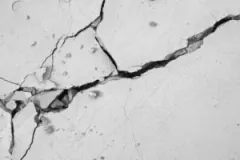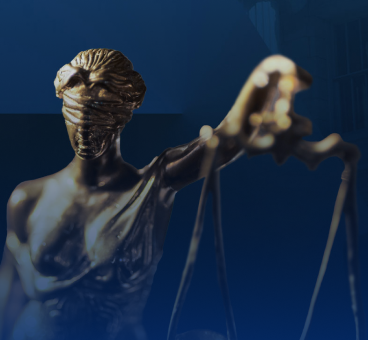
Signs of structural damage are not always apparent, but over time, they can significantly damage your property and finances. Recognizing the signs of structural damage early can be crucial in mitigating the extent of the damage, ensuring safety, and potentially saving on costly repairs.
This damage can stem from various causes, including environmental factors, poor construction practices, or simple wear and tear over time. Understanding structural damage, identifying it, and addressing potential liabilities, our Boca Raton property damage lawyers can help you should you ever need to file a structural damage insurance claim.
What is Considered Structural Damage to a House?
Structural damage is any significant harm affecting a building’s core integrity, making it unsafe or unsuitable for use.
Unlike cosmetic damage, which only affects appearance, structural damage compromises the building’s ability to withstand loads and perform its intended function.
- Essential Components Affected:
- Foundation: The bedrock upon which all structures stand.
- Load-Bearing Walls: Critical for carrying and distributing weight from the roof and upper floors.
- Beams and Columns: The skeletal framework that supports a building’s structure.
- Roofing Structure: Keeps the integrity of the building envelope secure against environmental elements.
- Safety and Usability at Risk:
- When structural integrity is compromised, the safety of occupants is in jeopardy.
- Usability for intended purposes, whether residential, commercial, or industrial, is also threatened.
- Distinguishing from Cosmetic Damage:
- Cosmetic damage might crack paint or chip surfaces, but structural damage can lead to catastrophic failure.
- The ability to bear weight and withstand external and internal forces distinguishes structural components from mere cosmetic features.
- Performance Undermined:
- A building damaged at its core may no longer be able to perform functions it was designed for, such as withstanding heavy loads, resisting weather, or providing sound insulation.
Recognizing the critical nature of these elements and the roles they play can guide property owners in prioritizing repairs and maintenance, ensuring the longevity and safety of their structures.

Common Causes of Structural Damage
Structural damage to a property can stem from a myriad of sources, each with its own set of complexities. These are some of the most common causes.
- Natural disasters: Earthquakes, floods, and hurricanes can lead to significant structural damage.
- Construction faults: Poor construction techniques or substandard materials can cause premature deterioration.
- Aging: Older buildings are more susceptible to damage due to materials deteriorating over time.
The impact of structural damage extends beyond immediate repair costs; it can also significantly decrease a property’s market value and lead to higher insurance premiums.
Signs of Structural Damage to Your Property
Identifying structural damage early can help prevent the need for extensive and expensive repairs. Here are some signs to watch for:
- Visible cracks: Look for large cracks in the foundation or load-bearing walls. Small hairline cracks might be cosmetic, but larger, widening cracks indicate deeper issues.
- Doors and windows that stick: If doors or windows begin to jam or fail to close correctly, it could be due to the shifting of the building’s frame.
- Uneven floors or ceilings: Sloping or sagging can suggest shifts in the foundation or deterioration of structural supports.
- Gaps around frames: Gaps between window frames and the walls can indicate that the structure has shifted.
Acknowledging these indicators is the first line of defense in property maintenance. By staying alert to these signs, property owners can act swiftly to stabilize their investments and avert the disruptions and financial burdens that significant repairs can impose.

How to Accurately Diagnose Structural Damage
To accurately identify and diagnose structural damage, consider the following steps:
- Conduct a self-inspection: Regularly check your property for signs of damage. This routine can help catch issues before they escalate.
- Hire a professional: A structural engineer can thoroughly assess the severity and cause of any damage.
- Utilize technology: Tools such as moisture meters, laser levels, and structural software can help detect and quantify damage.

Liability and Legal Recourse
Determining who is liable for structural damage can be complex and depends on the circumstances surrounding the damage. Liable parties may include:
- Previous owners: If they knew of and did not disclose existing damage
- Construction companies: If poor construction or use of inadequate materials can be proven
- Maintenance workers or contractors: If their negligence exacerbated the damage.
Insurance Coverage and Structural Damage
Insurance coverage for structural damage typically depends on the cause of the damage and the specific terms of your insurance policy.
- Property insurance: Generally covers damages from events like fires, hurricanes, and other natural disasters but might exclude floods or earthquakes.
- Special riders: Additional coverage for events not covered under standard policies, such as flood damage.
Filing a Claim
- Documentation: Gather all necessary documentation of damage and repairs needed.
- Claims process: Notify your insurance promptly and follow their process for filing claims, which usually involves an assessment by a claims adjuster.
Challenges with Insurance Claims
- Coverage disputes: Insurers may deny claims based on causes or conditions excluded in the policy.
- Underestimation of damages: Insurance adjusters might underestimate the extent or cost of repairs.
While you can work with your insurance provider to seek compensation for structural damages to your property, having the legal guidance of an attorney familiar with the legal aspects of these claims eliminates the stress and helps recover just compensation for your losses.
Preventing Structural Damage
Prevention is the best medicine, especially when it comes to significantly reducing the risk of structural damage to your property.
- Regular inspections: Conduct seasonal inspections and maintenance to catch issues early.
- Address minor repairs promptly. Fixing small problems like leaks or cracks can prevent them from becoming more significant issues.
- Consult professionals: Regular check-ups from structural engineers or construction experts can help maintain structural integrity.
Despite your best efforts, your property may suffer structural damage simply due to aging and wear and tear. However, keeping it in the best shape possible can help lower the costs of repairing the damage if it occurs.
Call Ged Lawyers Today to Begin Your Property Damage Claim
Promptly recognizing and addressing signs of structural damage can save property owners significant time, money, and stress. It’s crucial to understand the causes, recognize the signs, and act swiftly and appropriately through legal and insurance avenues.
If you have structural damage issues and need legal guidance, Ged Lawyers can provide expert advice and representation to ensure your rights and property are protected. Contact us today for your free consultation.
